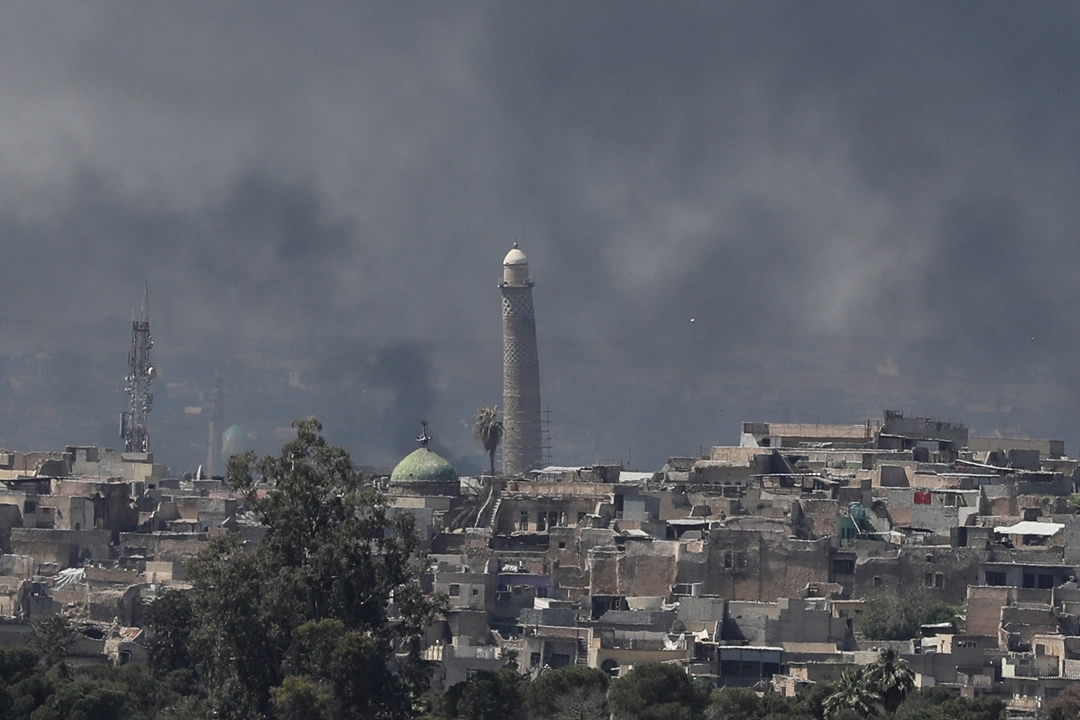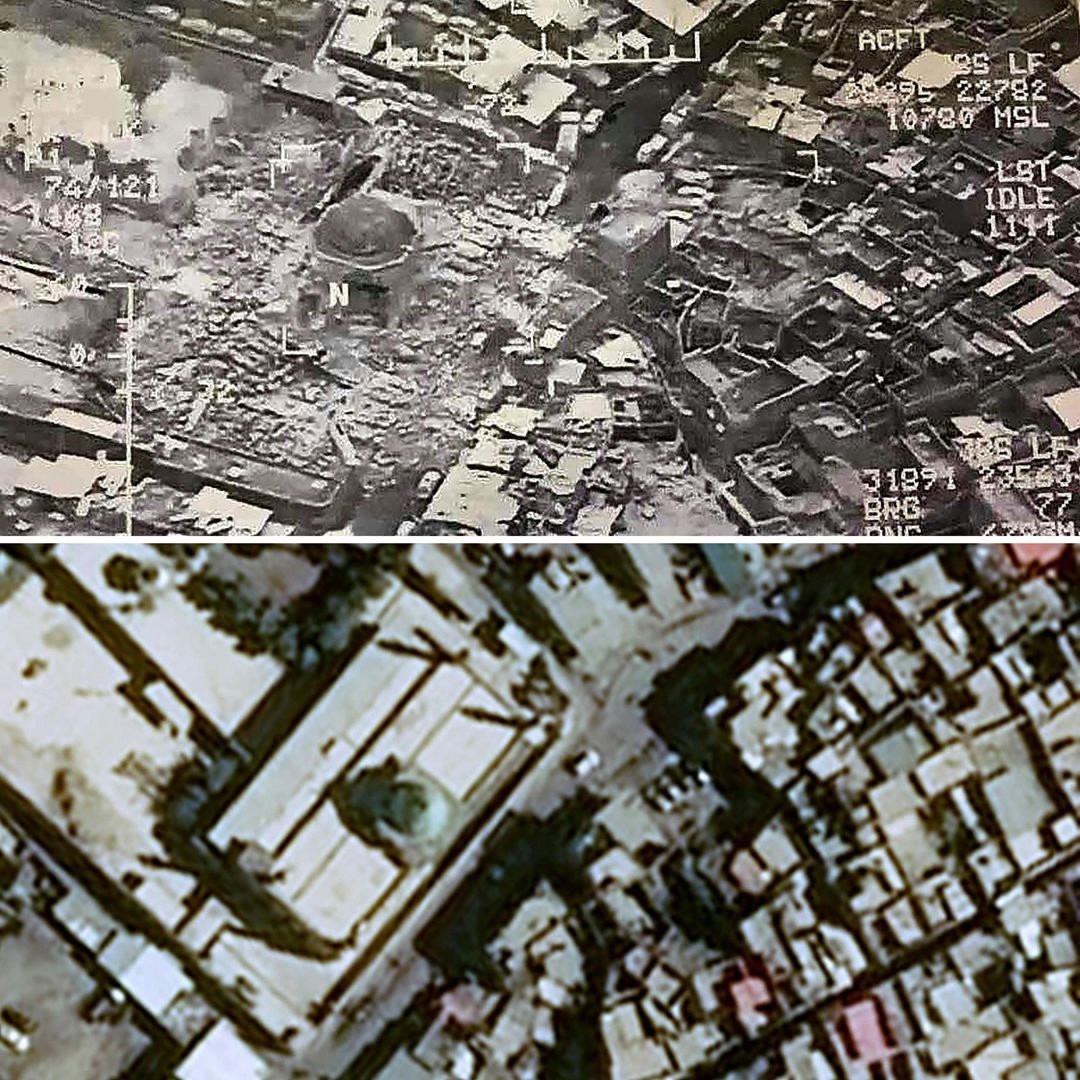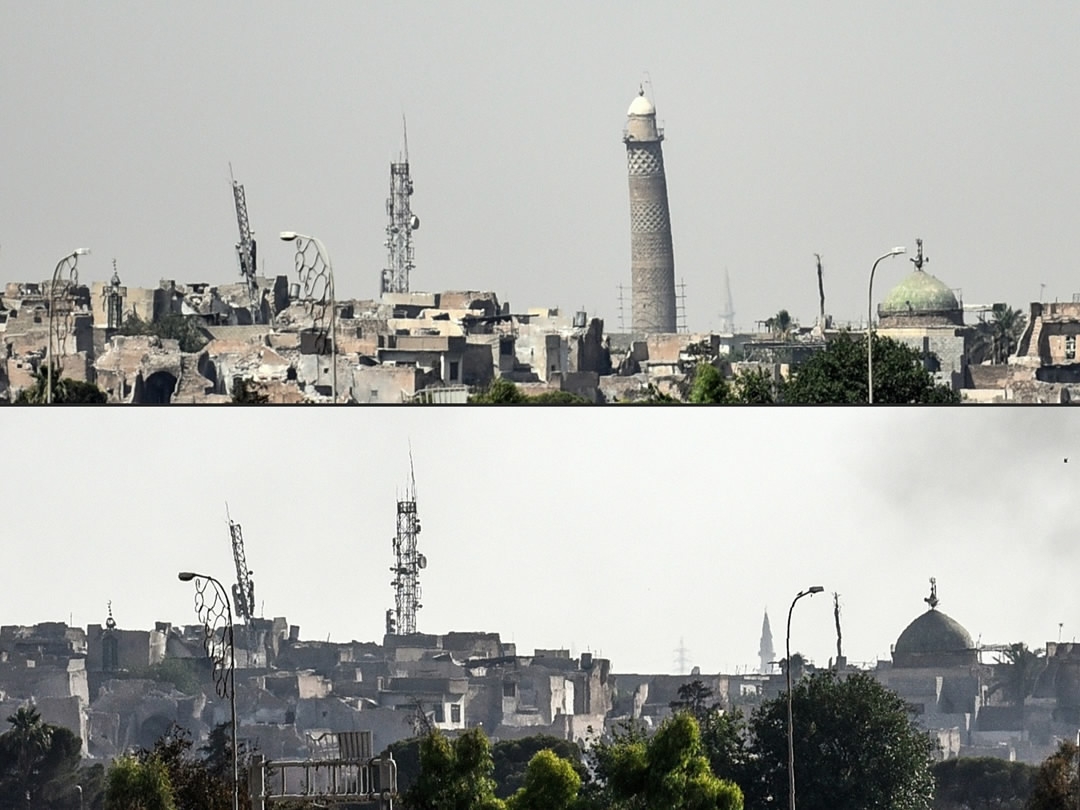ISIL blew up a historic landmark in Mosul — the city’s famed 12th century al-Nuri mosque with its iconic leaning minaret known as al-Hadba, from where the ISIL leader proclaimed the militant group’s self-styled caliphate nearly three years ago.

A smoke rises above al-Nuri mosque in the old city as Iraqi forces fight ISIL militants in Mosul, Iraq April 17, 2017. /VCG Photo
The explosion destroyed another piece of priceless Iraqi cultural heritage but also sent a strong message to US-led coalition forces and Iraqi troops closing in on the last stronghold of ISIL in Mosul’s Old City neighborhood.
Iraq’s Ministry of Defense said the militants detonated explosives planted inside the structures on Wednesday night. Prime Minister Haider al-Abadi tweeted early on Thursday that the destruction was an admission by the militants that they are losing the fight for Iraq’s second-largest city.
"Daesh’s bombing of the al-Hadba minaret and the al-Nuri mosque is a formal declaration of their defeat," al-Abadi said, using the Arabic acronym for the ISIL.
"It is a shock, a real big shock," Amir al-Jumaili, a professor at the Archaeology College in Mosul told The Associated Press.

This combination of pictures created on June 22, 2017 shows an aerial view (top) of reported destruction inside Mosul's al-Nuri mosque compound on June 21, 2017, and a satellite image of the same place on February 19, 2017. /VCG Photo
The al-Nuri mosque, which is also known as Mosul’s Great Mosque, is where ISIL leader Abu Bakr al-Baghdadi made a rare public appearance, declaring a so-called Islamic caliphate in the summer of 2014, shortly after Mosul was overrun by the militants. The minaret that leaned like Italy’s Tower of Pisa had stood for more than 840 years.
ISIL blew up the mosque during the celebrations of Laylat al Qadr, the holiest night of the year for Muslims. The “Night of Power” commemorates the night the Quran was revealed to the Prophet Muhammad during the Muslim holy month of Ramadan, which is now underway.
An ISIL statement posted online shortly after the Ministry of Defense reported the mosque’s destruction blamed an air strike by the US for the loss of the mosque and minaret.
The US-led coalition rejected the ISIL claim. US Army spokesperson Col. Ryan Dillon told the Associated Press coalition planes “did not conduct strikes in that area at that time.”

This combination of pictures created on June 22, 2017 shows (top) a picture taken on June 20, 2017, of Mosul's leaning Al-Hadba minaret and (bottom) a picture taken on June 22, 2017 of Mosul's skyline missing its trademark minaret the day after it was blown up by ISIL. /VCG Photo
ISIL fighters initially attempted to destroy the minaret in July 2014. The militants said the structure contradicted their fundamentalist interpretation of Islam, but Mosul residents converged on the area and formed a human chain to protect it. ISIL has demolished dozens of historic and archaeological sites in and around Mosul, saying they promoted idolatry.
(Source: AP)










